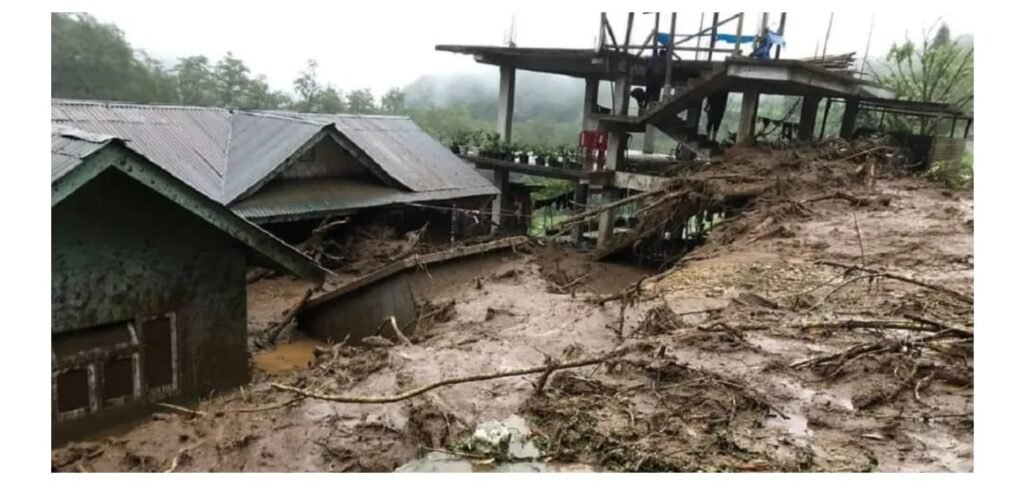In a tragic turn of events, West Sikkim has recently witnessed a series of landslides that have left a trail of destruction in their wake. Over 100 houses have been severely damaged, and several vital bridges have been swept away, disrupting transportation and causing significant distress to the affected communities. The landslides have dealt a severe blow to the region, requiring immediate attention and support to aid in the recovery process.
Unforeseen Natural Calamity Strikes: West Sikkim, known for its scenic landscapes and picturesque towns, fell victim to the wrath of nature as powerful landslides tore through the region. The cascading torrents of earth and debris caused by heavy rainfall wreaked havoc on villages and towns, leaving behind a scene of devastation.
Homes Rendered Uninhabitable: As the landslides barreled through West Sikkim, more than 100 houses bore the brunt of the catastrophe. Many homes were reduced to rubble, leaving families displaced and vulnerable. The affected residents, now faced with the arduous task of rebuilding their lives, require urgent support from the local authorities and relief organizations.
Critical Infrastructure Severely Impacted: The landslides also inflicted significant damage on critical infrastructure, with several key bridges collapsing under the sheer force of the mudslides. These bridges played a vital role in connecting communities, and their destruction has severely hampered transportation in the region. The disruption has isolated towns and villages, making it challenging for residents to access essential services and impeding rescue and relief operations.
Government Response and Relief Efforts: In the wake of this natural disaster, the local government has swiftly mobilized response teams and initiated relief efforts to address the immediate needs of those affected. Rescue teams, comprising skilled personnel and equipment, have been deployed to the affected areas to locate and assist trapped individuals, ensuring their safety and well-being.
Additionally, temporary shelters and relief camps have been set up to provide immediate assistance to the displaced families. These facilities offer temporary accommodation, food, and medical aid, aiming to alleviate the suffering caused by the landslides.
Collaborative Efforts for Reconstruction: Recognizing the immense task of rebuilding homes and infrastructure, the government, in collaboration with various aid organizations, has launched initiatives to expedite the recovery process. Efforts are underway to assess the extent of the damage and develop comprehensive rehabilitation plans for the affected communities.
Furthermore, experts in geology and engineering have been engaged to evaluate the stability of the region and provide recommendations for mitigating future risks. Their expertise will be crucial in implementing long-term solutions to prevent similar tragedies from occurring in the future.
Appeal for Support and Solidarity: As West Sikkim grapples with the aftermath of this catastrophic event, the affected residents and communities are in dire need of assistance and solidarity. It is a time for collective action, where individuals, organizations, and the wider community can come together to extend support in any way possible. Donations of funds, essential supplies, and volunteering efforts will contribute significantly to the recovery and rehabilitation process.
The landslides in West Sikkim have caused widespread devastation, resulting in the destruction of over 100 houses and the loss of critical bridges. The path to recovery will be challenging, but with concerted efforts from the government, aid organizations, and the support of compassionate individuals, the affected communities can rebuild their lives and restore normalcy. It is crucial to stand united in the face of such disasters, demonstrating resilience and compassion to help those in need during this trying time.


